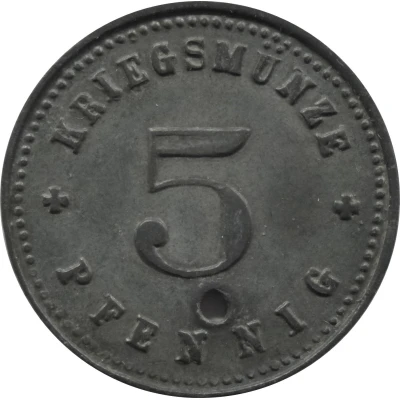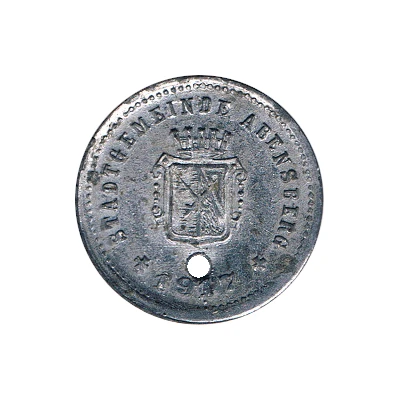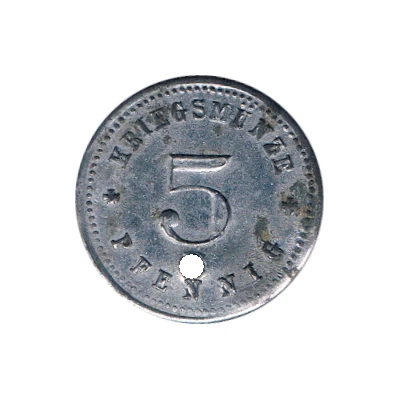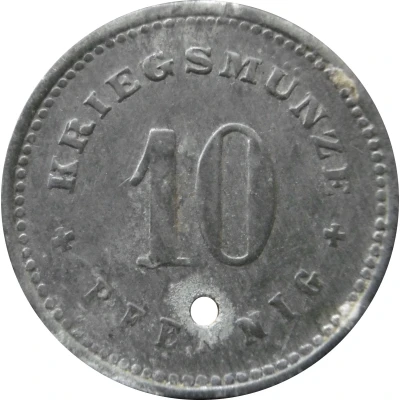


© Willem63 (CC BY-NC-SA)
5 Pfennigs - Abensberg
1917 year| Zinc | 1.64 g | 19.5 mm |
| Issuer | City of Abensberg (Federal state of Bavaria) |
|---|---|
| Emperor | William II (Wilhelm II) (1888-1918) |
| Type | Standard circulation coin |
| Year | 1917 |
| Value | 5 Pfennigs (5 Pfennige) (0.05) |
| Currency | Mark (1914-1924) |
| Composition | Zinc |
| Weight | 1.64 g |
| Diameter | 19.5 mm |
| Thickness | 1.1 mm |
| Shape | Round with a round hole |
| Technique | Milled |
| Orientation | Medal alignment ↑↑ |
| Demonetized | Yes |
| Updated | 2024-10-04 |
| Numista | N#301223 |
|---|---|
| Rarity index | 93% |
Reverse
Script: Latin
Lettering:
KRIEGSMÜNZE
5
PFENNIG
Edge
Milled
Interesting fact
The 5 Pfennigs - Abensberg 1917 coin was minted during a time of economic turmoil in Germany, known as the "Inflationary Period" (1914-1923). During this time, the value of the German mark (the national currency) plummeted, and prices for everyday goods skyrocketed. As a result, many Germans turned to alternative forms of currency, such as local emergency currencies like the 5 Pfennigs - Abensberg 1917 coin. This coin, made of zinc and weighing 1.64 grams, was issued by the City of Abensberg in Bavaria and was used as a substitute for the rapidly devaluing national currency. Despite its humble origins, the 5 Pfennigs - Abensberg 1917 coin has become a sought-after collector's item among numismatists today.



